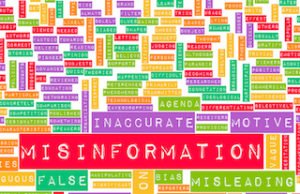As a financial advisor, you’ve no doubt read a compliance manual or three in your time. These documents are typically rule-driven, which means they can be long and dense to work with. The good news: You can also lower your errors-and-omissions insurance risk by adopting ethical values and business practices. This article (Part 2) provides 20 more quick pointers for doing just that. Watch for more parts in the coming weeks.
Tip #21 – Watch Less TV
Take a break from financial news and commentary. Pay more attention to your own experience and values.
Tip #22 – Hire Great Support Staff
Don’t skimp when hiring staff. Hire the very best people you can afford. They will save you money—and reduce your risks—in the long run.
Tip #23 – Improve Your Skills AND Your Heart
Read sales books that balance skill enhancement with ethical inspiration. Stephen Covey’s Principle Centered Leadership is a classic example.
Tip #24 – Leave a Legacy
Think about the legacy you want to leave. Then make sure your business practices create it.
Tip #25 – Make Your Parents Proud
Do nothing that would hurt or embarrass your parents. Instead, strive to make them proud of you.
Tip #26 – Rules Matter
Follow all of the rules prescribed by regulators. They apply to you. Never assume a rule doesn’t matter. It does. Don’t think you’ll never get caught. You will.
Tip #27 – Get in Their Face
Send all your clients a timely news article. Then follow up by phone. The more you’re in their face, the more they will trust your face.
Tip #28 – Bottom Line Isn’t Everything
Do something positive for your clients and don’t charge them for it. Show them that the bottom line isn’t your only line.
Tip #29 – Don’t Treat Clients as Account Numbers
Clients are people, not numbers. So try hard to get to know them and their families.
Tip #30 – Do Business by the Book
Make sure your marketing (especially seminar) practices are in compliance. And know your administrative procedures inside out.
Tip #31 – Become a True Professional
Professionalism hinges on two things: being competent and acting with integrity. For inspiration, check out the National Ethics Association’s Ethics Center.
Tip #32 – The Danger of Expectations
Meet and hopefully exceed client expectations. If they’re expecting more, watch out. Always set—and reset—expectations frequently.
Tip #33 – Become a Great Communicator
Reach out to your clients frequently. Ask them how they’re feeling about their product, their plan, and you. If they’re not happy, find out why and fix it.
Tip #34 – Do What’s Best for Clients
Never forget that it’s about them, not you. Whatever your license type, adopt the mindset of a true fiduciary.
Tip #35 – Recognize Ethical Dilemmas
Recognize ethical dilemmas and manage them by getting SMART:
- Study your options carefully.
- Make a mental note of everyone affected by each option.
- Assess who benefits or suffers from each option.
- Reflect on whether you’d be able to live with yourself after making each choice.
- Total up all the factors and make a final (smart) decision.
Tip #36 – Watch the Downside
Be sure to educate your clients about the downsides of risky investing. If they continue to chase aggressive returns, try to sell them on more prudent alternatives.
Tip #37 – Listen, Don’t Speak
If a client calls to complain, resist the urge to defend yourself. Instead, listen carefully. Then make an appointment with them to discuss concerns in person.
Tip #38 – The Power of Apology
If a client complains, apologize sincerely. Then say you understand the person’s frustration and want to help.
Tip #39 – Research Complaints
If a client complains, start fact finding. What happened exactly? Why? Were you or your staff to blame or was it a case of misplaced expectations? Don’t defend the facts; document them.
Tip #40 – Checking Understanding
It’s crucial to fully understand where a client is coming from. So make sure your impression of the client’s words is correct. If it isn’t, correct the statement and check understanding again.
For more information on reducing your errors-and-omissions insurance liabilities, please visit our E&O Headquartersat E&OforLess.com (financial professionals only). For more information on ethical selling practices, visit National Ethics Association’s Ethics Center.












